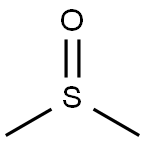2,3-Lutidine
Synonym(s):2,3-Dimethylpyridine
- CAS NO.:583-61-9
- Empirical Formula: C7H9N
- Molecular Weight: 107.15
- MDL number: MFCD00009605
- EINECS: 209-514-1
- SAFETY DATA SHEET (SDS)
- Update Date: 2025-10-10 07:26:42

What is 2,3-Lutidine?
Description
2,3-Lutidine belongs to the pyridine group of derivatives and is a commercially available organic reagent used as an intermediate in organic synthesis and as an acid-binding agent. It is also used as a food additive for flavouring purposes.
Chemical properties
clear colorless to slightly yellow liquid
The Uses of 2,3-Lutidine
2,3-Lutidine is a lansoprazole intermediates. It is used as pharmaceutical intermediate.
Definition
LOTUS: 2,3-Lutidine is a natural product found in Nicotiana tabacum with data available.
Synthesis Reference(s)
The Journal of Organic Chemistry, 66, p. 53, 2001 DOI: 10.1021/jo000724t
Purification Methods
Steam distil it from a solution containing about 1.2 equivalents of 20% H2SO4, until ca 10% of the base has been carried over with the non-basic impurities. The acidic solution is then made alkaline, and the base is separated, dried over NaOH or BaO, and fractionally distilled. The distilled lutidine is converted to its urea complex by stirring 100g with 40g of urea in 75mL of H2O, cooling to 5o, filtering at the pump, and washing with 75mL of H2O. The complex, dissolved in 300mL of H2O, is steam distilled until the distillate gives no turbidity with a little solid NaOH. The distillate is then treated with excess solid NaOH, and the upper layer is removed: the aqueous layer is then extracted with diethyl ether. The upper layer and the ether extract are combined, dried (K2CO3), and distilled through a short column. Final purification is by fractional crystallisation using partial freezing. The picrate crystallises from EtOH with m 187-188o. [Kyte et al. J Chem Soc 4454 1960, Beilstein 20 H 243, 20 II 159, 20 III/IV 2765, 20/6 V 15.]
Properties of 2,3-Lutidine
| Melting point: | -15 °C (lit.) |
| Boiling point: | 162-163 °C (lit.) |
| Density | 0.945 g/mL at 25 °C (lit.) |
| refractive index | n |
| Flash point: | 122 °F |
| storage temp. | Inert atmosphere,Room Temperature |
| form | Liquid |
| pka | 6.57(at 25℃) |
| color | Clear colorless to slightly yellow |
| Water Solubility | 95 g/L (26 ºC) |
| BRN | 106418 |
| CAS DataBase Reference | 583-61-9(CAS DataBase Reference) |
| NIST Chemistry Reference | Pyridine, 2,3-dimethyl-(583-61-9) |
| EPA Substance Registry System | 2,3-Dimethylpyridine (583-61-9) |
Safety information for 2,3-Lutidine
| Signal word | Danger |
| Pictogram(s) |
 Flame Flammables GHS02  Corrosion Corrosives GHS05  Exclamation Mark Irritant GHS07 |
| GHS Hazard Statements |
H226:Flammable liquids H302:Acute toxicity,oral H315:Skin corrosion/irritation H318:Serious eye damage/eye irritation H335:Specific target organ toxicity, single exposure;Respiratory tract irritation |
| Precautionary Statement Codes |
P261:Avoid breathing dust/fume/gas/mist/vapours/spray. P280:Wear protective gloves/protective clothing/eye protection/face protection. P305+P351+P338:IF IN EYES: Rinse cautiously with water for several minutes. Remove contact lenses, if present and easy to do. Continuerinsing. |
Computed Descriptors for 2,3-Lutidine
| InChIKey | HPYNZHMRTTWQTB-UHFFFAOYSA-N |
| SMILES | CC1=C(N=CC=C1)C |
2,3-Lutidine manufacturer
Kavya Pharma
New Products
4,4-Difluoropiperidine hydrochloride tert-butyl 9-methoxy-3-azaspiro[5.5]undecane-3-carboxylate Indole Methyl Resin N-Isopropylurea N,N-Dicyclohexylcarbodiimide(DCC) MELDRUMS ACID 5-METHYLISOXAZOLE-4-CARBOXYLIC ACID Magnessium Bis glycinate Zinc ascorbate 1-bromo-2-butyne 2-acetamidophenol 9(10H)-anthracenone Erythrosin B, 4-Piperidinopiperidine 2-((4-morpholinophenylamino) (methylthio) methylene) malononitrile 2,4-dihydroxybenzaldehyde 3-(4-morpholinophenylamino)-5-amino-1H-pyrazole-4-carbonitrile Methyl 2-methylquinoline-6-carboxylate 2,6-dichloro-4-nitropyridine 4-Bromo-2-chlorobenzonitrile 2-(benzylamino)acetic acid hydrochloride 4-(tert-Butoxycarbonylamino)but- 2-ynoic acid 3,4-dihydro-2H-benzo[b][1,4]dioxepine 1-Phenyl-1-cycloprppanecarboxylicacidRelated products of tetrahydrofuran





![5H-Pyrrolo[3,4-b]pyridine-5,7(6H)-dione](https://img.chemicalbook.in/CAS/GIF/4664-00-0.gif)


You may like
-
 2,3-Lutidine CAS 583-61-9View Details
2,3-Lutidine CAS 583-61-9View Details
583-61-9 -
 2,3 Lutidine CAS 583-61-9View Details
2,3 Lutidine CAS 583-61-9View Details
583-61-9 -
 2,3-Lutidine CAS 583-61-9View Details
2,3-Lutidine CAS 583-61-9View Details
583-61-9 -
 2, 3-LUTIDINE For Synthesis CAS 583-61-9View Details
2, 3-LUTIDINE For Synthesis CAS 583-61-9View Details
583-61-9 -
 2,3-Lutidine CAS 583-61-9View Details
2,3-Lutidine CAS 583-61-9View Details
583-61-9 -
 Technical Grade 2,3 Dimethylpyridine Liquid, For LaboratoryView Details
Technical Grade 2,3 Dimethylpyridine Liquid, For LaboratoryView Details
583-61-9 -
 2 3 Lutidine PowderView Details
2 3 Lutidine PowderView Details
583-61-9 -
 2,3-Lutidine CAS No.: 583-61-9View Details
2,3-Lutidine CAS No.: 583-61-9View Details
583-61-9
